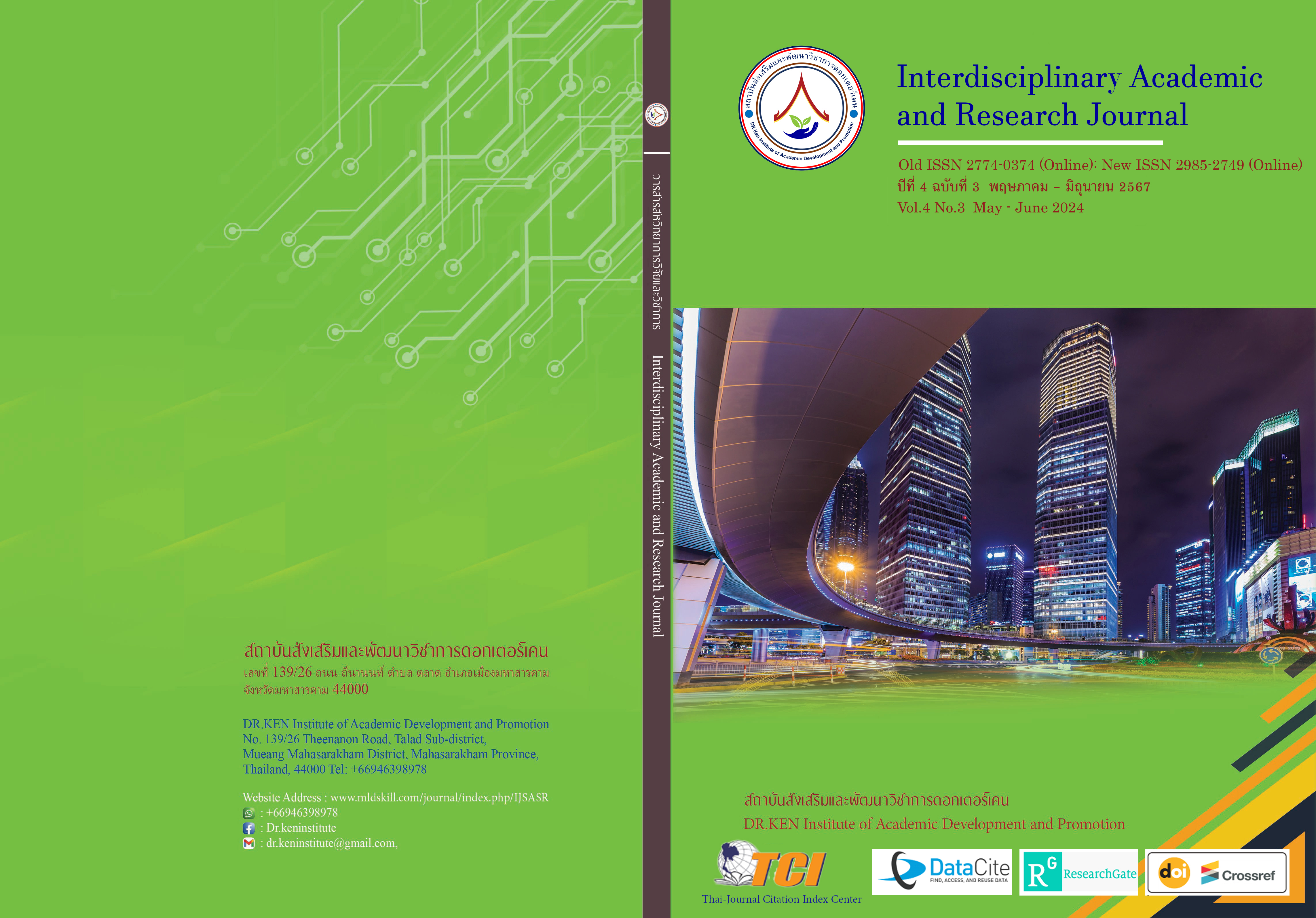The Innovation of Public Service in Phuket Creative City
DOI:
https://doi.org/10.60027/iarj.2024.275805Keywords:
Public Service; , Public entrepreneurship; , Creative CityAbstract
Background and Objectives: At the moment, service customers are the main focus of public sector innovation (PSI). It is characterized by its reliance on collaboration across all sectors to jointly discover and generate innovations through social processes to produce innovations in the formulation of public policy and the provision of public services to the general public. Thus, this paper aims (1) To study the public service innovation of Creative City, Phuket Province, and (2) To study the development guidelines for public entrepreneurs in Creative City, Phuket Province.
Methodology: The Quantitative research found that a Survey of People's Opinions on Public Service in a Case Study of Mai Khao Subdistrict Administrative Organization, Thep Krasattri Subdistrict Administrative Organization, Cherng Talay Subdistrict Administrative Organization, Pa Khlok Municipality, Kamala Subdistrict Administrative Organization.
Results: The provision of public services by local government organizations has limitations on the authority of the locality in the provision of public services. The development for public entrepreneurs is to organize an exchange of knowledge about Phuket's public services that support the growth of Phuket City through the cultural activities and traditions of local people continually.
Conclusions: The Implementation of knowledge about public service development guidelines of Phuket Creative City from interviews and in the process of conducting public hearings with local government organizations: a case study of Mai Khao Subdistrict Administrative Organization, Thep Krasattri Subdistrict Administrative Organization, Cherng Talay Subdistrict Administrative Organization, Pa Khlok Municipality, Kamala Subdistrict Administrative Organization. The result is the creation of public service innovation of Phuket Creative City and disseminated as a set of training knowledge to increase skills about the smart city for sustainability.
References
จรัส สุวรรณมาลา. 2547. นวัตกรรมท้องถิ่นไทย. พิมพ์ครั้งที่ 1. : โครงการวิถีใหม่และองค์กรปกครองส่วนท้องถิ่นในประเทศไทย คณะรัฐศาสตร์ จุฬาลงกรณ์มหาวิทยาลัย.
จรัส สุวรรณมาลา. 2549. ข้อเสนอเชิงนโยบายเพื่อส่งเสริมนวัตกรรมท้องถิ่นในประเทศไทย. กรุงเทพฯ : คณะรัฐศาสตร์ จุฬาลงกรณ์มหาวิทยาลัย.
จิราภา แจ้งใจดี. (2541).การกระจายอำนาจบริการสาธารณะในท้องถิ่นไทย : กรณีศึกษาการขนส่งโดยสารรถประจำทางในรูปแบบสหการผสม ในเขตกรุงเทพมหานครและปริมณฑล. มหาวิทยาลัยรามคำแหง
นันทวัฒน์ บรมานันท์. (2554). มาตรฐานใหม่ของการจัดทำบริการสาธารณะระดับชาติในประเทศ. สำนักพิมพ์วิญญูชน.
ประยูร กาญจนดุล. (2538). คำอธิบายกฎหมายปกครอง. พิมพ์ครั้งที่ 5. สำนักพิมพ์จุฬาลงกรณ์มหาวิทยาลัย.
วีระศักดิ์ เครือเทพ. (2548). ข้อค้นพบจากนวัตกรรมท้องถิ่นไทย. วารสารประชาคมวิจัย, 39(1), 19-73.
Alberti, M. (2008). Advances in urban ecology: Integrating humans and ecological processes in urban ecosystems. Springer Science & Business Media.
Babbie, E.R. (2010). The practice of social research. 12th edition. Belmont, CA: Wadsworth.
Borzaga, C., & Tortia, E. C. (2006). Worker motivations, job satisfaction, and loyalty in public and nonprofit social services. Nonprofit and Voluntary Sector Quarterly, 35(2), 225-248.
Denhardt, R.B., & Catlaw, T.J. (2014). Theories of Public Organization. Cengage Learning.
Falleti, T. G., & Lynch, J. (2009). Context and causal mechanisms in political analysis. Comparative Political Studies, 42(9), 1143-1166.
Huang, L., & Bian, Y. (2019). Urban development in China: A holistic approach. Routledge.
Lange, E. (2004). Public entrepreneurship: A case study in groundwater basin management. Public Administration Review, 64(5), 566-576.
Light, P.C. (1998). Innovation in public services-literature review. Report on a project carried out to support the preparation of an ANAO Better Practice Guide on public sector innovation. Retrieved August 1, 2013, from http://www.idea.gov.uk/idk/aio/1118552
Lindlof, T. R., & Taylor, B. C. (2002). Qualitative communication research methods. 2nd edition. Thousand Oaks, Sage
Osborne, D., & Plastrik, P. (2000). The reinventor's field book: tools for transforming your government. San Francisco: Jossey-Bass.
Patton, M. (1980). Qualitative Evaluation Methods. Sage Publications, Beverly Hills.
Schank, H., & Hudson, S. (2018). Getting the Work Done: What Government Innovation Really Looks Like. New America: Public Interest Technology.
Downloads
Published
How to Cite
Issue
Section
License
Copyright (c) 2024 Interdisciplinary Academic and Research Journal

This work is licensed under a Creative Commons Attribution-NonCommercial-NoDerivatives 4.0 International License.
Copyright on any article in the Interdisciplinary Academic and Research Journal is retained by the author(s) under the under the Creative Commons Attribution-NonCommercial-NoDerivatives 4.0 International License. Permission to use text, content, images, etc. of publication. Any user to read, download, copy, distribute, print, search, or link to the full texts of articles, crawl them for indexing, pass them as data to software, or use them for any other lawful purpose. But do not use it for commercial use or with the intent to benefit any business.
















.png)


